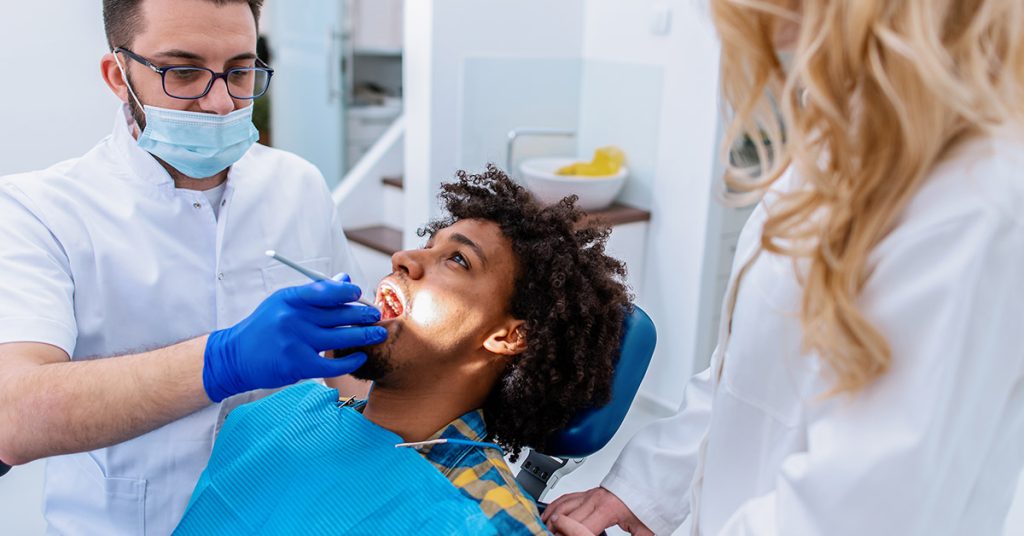Dental emergencies can strike unexpectedly, causing significant discomfort, pain, and even trauma. From a sudden toothache disrupting daily life to a severe injury affecting oral health, these emergencies demand immediate attention and proper management. In this comprehensive guide, we’ll delve into various types of dental emergencies, their causes, symptoms, and the essential steps to take for effective treatment and prevention.
Understanding Dental Emergencies
Total dental care is essential for addressing dental emergencies, which encompass a wide range of urgent conditions necessitating immediate attention to alleviate pain, prevent complications, and preserve oral health. These emergencies may stem from accidents, underlying dental conditions, infections, or trauma to the mouth or teeth. Seeking consultation from a provider of total dental care ensures prompt and comprehensive management of dental emergencies, promoting effective treatment and optimal outcomes.
Types of Dental Emergencies
1. Toothache: A toothache is one of the most common dental emergencies, often caused by tooth decay, infection, gum disease, or dental trauma. The pain can range from mild discomfort to excruciating throbbing sensations, significantly impacting daily activities and sleep.
2. Dental Trauma: Accidents or injuries to the mouth, such as a fall, sports-related injury, or automobile accident, can result in dental trauma. This may include broken or knocked-out teeth, fractured jaws, or soft tissue injuries, necessitating immediate attention to prevent further damage and facilitate proper healing.
3. Abscessed Tooth: An abscessed tooth occurs when a bacterial infection causes a pocket of pus to form within the tooth or surrounding gum tissue. It typically manifests as severe pain, swelling, fever, and an unpleasant taste in the mouth. Without prompt treatment, an abscessed tooth can lead to serious complications, including systemic infection.
4. Lost Filling or Crown: Dental fillings and crowns may become dislodged or damaged due to wear and tear, trauma, or decay. This can expose the underlying tooth structure to bacteria and sensitivity, requiring prompt replacement to restore function and prevent further deterioration.
5. Broken or Fractured Teeth: Teeth can fracture or break due to various reasons, such as biting on hard objects, trauma, or untreated cavities weakening the tooth structure. Depending on the severity of the fracture, it may cause pain, and sensitivity, and compromise the integrity of the tooth, necessitating immediate dental intervention.
6. Orthodontic Emergencies: Individuals undergoing orthodontic treatment with braces or aligners may experience emergencies such as broken wires, loose brackets, or sharp appliance edges causing irritation or injury to the oral tissues. Prompt attention from an orthodontist is essential to address these issues and ensure treatment progress.
Recognizing Dental Emergency Symptoms
Identifying the signs and symptoms of a dental emergency is crucial for timely intervention and appropriate management. Common indicators include:
- Severe or persistent tooth pain
- Swelling or inflammation in the gums or face
- Bleeding from the mouth or gums
- Loose or knocked-out teeth
- Broken or fractured teeth
- Pus discharge or foul odor
- Difficulty chewing or swallowing
- Trauma to the mouth or face
- Pain or discomfort associated with orthodontic appliances
Steps to Take During a Dental Emergency
1. Stay Calm: In the event of a dental emergency, it’s essential to remain calm and assess the situation calmly to determine the appropriate course of action.
2. Contact Your Dentist: Immediately contact your dentist or emergency dental clinic to schedule an urgent appointment and receive guidance on managing the situation until you can receive professional care.
3. Manage Pain and Discomfort: Use over-the-counter pain relievers such as ibuprofen or acetaminophen to alleviate pain and discomfort temporarily. Avoid placing aspirin directly on the affected tooth or gums, as it may cause tissue irritation.
4. Control Bleeding: If there is bleeding from the mouth or gums, apply gentle pressure with a clean gauze or cloth to the affected area to help stop the bleeding. Avoid excessive rinsing or spitting, as it may aggravate the bleeding.
5. Preserve Knocked-Out Teeth: If a tooth has been knocked out, handle it carefully by the crown (top part), avoiding contact with the root. Rinse the tooth gently with water if it’s dirty, but do not scrub or remove any attached tissues. Place the tooth back into its socket if possible, or store it in a container of milk or saliva to keep it moist until you can see a dentist.
6. Protect Fractured Teeth: If a tooth is broken or fractured, rinse your mouth with warm water to clean the area and apply a cold compress to the outside of the mouth or cheek to reduce swelling. Avoid chewing on the affected side and consume soft foods to prevent further damage.
7. Follow Dentist’s Instructions: Follow any specific instructions provided by your dentist or emergency care provider regarding pain management, oral hygiene, and follow-up appointments to ensure optimal recovery and treatment outcomes.
Preventing Dental Emergencies
While some dental emergencies are unavoidable, taking preventive measures can significantly reduce the risk of experiencing dental problems:
- Practice good oral hygiene by brushing your teeth twice daily, flossing regularly, and using antimicrobial mouthwash to prevent tooth decay and gum disease.
- Wear a mouthguard during sports activities to protect your teeth from injuries and trauma.
- Avoid chewing on hard objects such as ice, popcorn kernels, or pens to prevent tooth fractures and damage to dental restorations.
- Attend regular dental check-ups and cleanings to detect and address any oral health issues early on.
Conclusion
Dental emergencies can occur suddenly and disrupt daily life, causing pain, discomfort, and anxiety. By understanding the types of dental emergencies, recognizing their symptoms, and taking appropriate steps for management and prevention, individuals can effectively address oral health emergencies and maintain optimal dental wellness. Remember to stay calm, seek professional dental care promptly, and prioritize preventive measures to safeguard your oral health and well-being.

